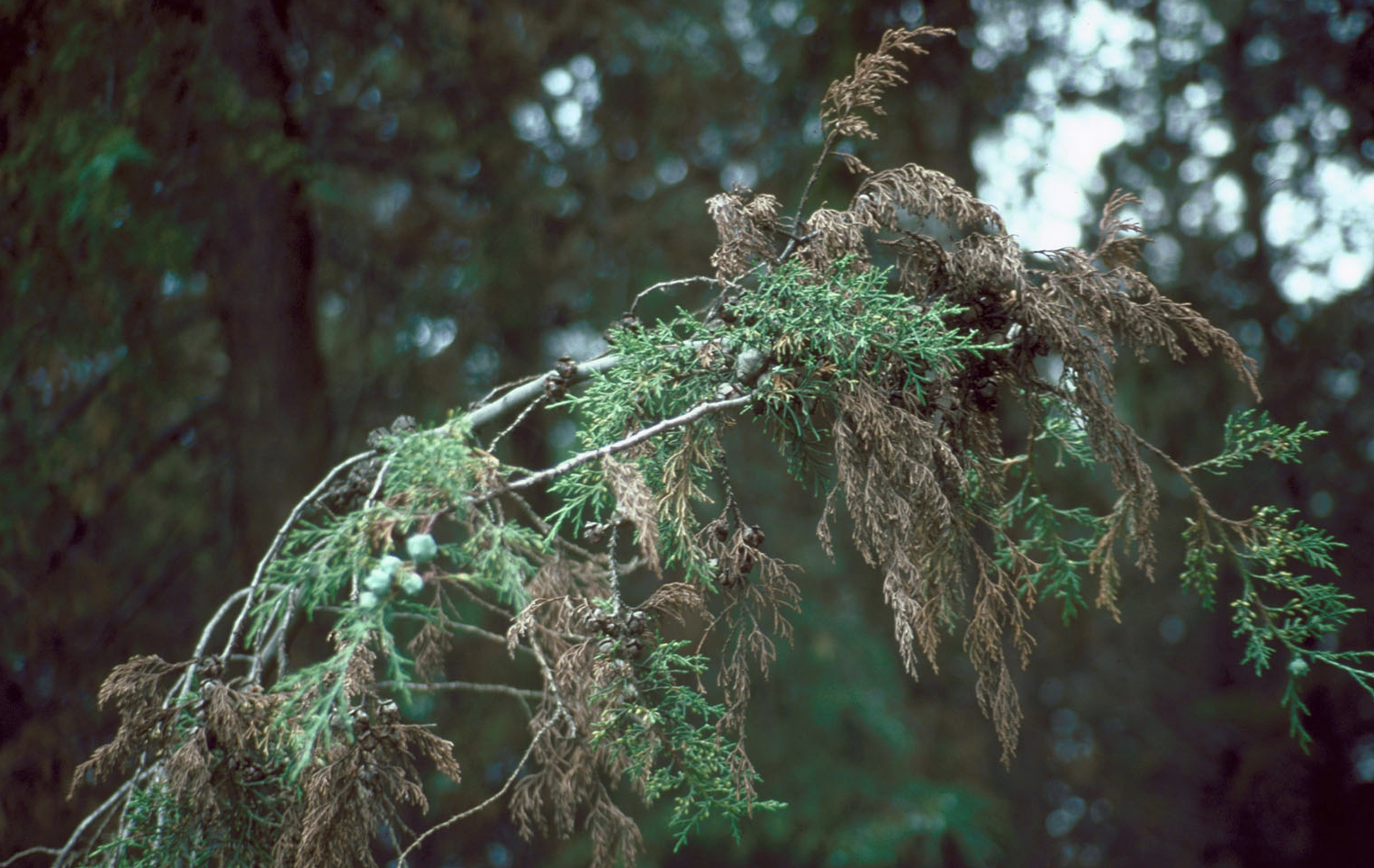
See all posts by this author
Juniper blight, particularly Phomopsis blight and Kabatina blight, are fungal diseases that affect junipers, causing branch dieback and foliage browning. Managing these blights requires an integrated approach.
Of course, prevention and treatment for juniper needle blight is included in a Plant Health Care subscription from Arborscapes. (As are myriad other pests and diseases) If you would like to become a part of our Plant Health Care program, reach out to Arborscapes today! Your living landscape will be the envy of the entire neighborhood!
Here’s how to handle juniper blight in the Charlotte area:
Cultural and Environmental Controls:
- Proper Spacing: Ensure junipers have sufficient spacing to allow for good air circulation, which helps keep foliage dry and reduces conditions favorable for fungal growth.
- Watering: Water at the base of the plant using drip irrigation or soaker hoses, avoiding wetting the foliage. If you must water from above, do so in the morning so the sun can dry the foliage.
- Sanitation: Regularly remove and dispose of any fallen or pruned juniper material. This helps reduce the source of fungal inoculum.
Physical Controls:
- Pruning: Regularly inspect your junipers and prune out any branches showing signs of blight. Ensure you disinfect your pruning tools between cuts with a 10% bleach solution or rubbing alcohol to prevent spreading the fungus.
- Resistant Varieties: If you’re planning to plant new junipers, consider choosing varieties known to be resistant to blight.
Chemical Controls:
- Fungicides: Preventative fungicide sprays can be effective against juniper blights. Start applications in early spring when new growth appears and continue as directed by the product label. Commonly used fungicides include products containing chlorothalonil, mancozeb, or propiconazole. Always read and follow label directions.
- Avoid Overhead Irrigation: As mentioned, keeping foliage dry is key. Overhead watering promotes the conditions fungi thrive in.
Preventative Measures:
- Plant Health: Keeping your junipers healthy can help reduce the susceptibility to diseases. This includes proper watering, fertilizing, and avoiding mechanical damage.
- Mulching: Applying a layer of mulch around the base of the juniper can help prevent the splash of fungal spores from the soil onto the plant during rain or watering.
Monitoring:
- Regularly inspect your junipers for signs of blight. Early detection and intervention can help manage and control the spread of the disease.
- Be aware of environmental conditions, especially extended wet periods, which can increase the risk of blight.
Remember that no single treatment method is a guaranteed solution for juniper blight. A combination of cultural practices, sanitation, and, when necessary, chemical controls will give you the best chance of managing and preventing the disease. To learn more about juniper blight, click here for an in-depth PDF from Cornell University.
And if all of this sounds like too much work, contact Arborscapes to subscribe to our Plant Health Care program, and we will take care of this, other pests, fertilization and health concerns for your living landscape!
Photo courtesy of Robert L. Anderson, USDA Forest Service, Bugwood.org
See all posts by this author
